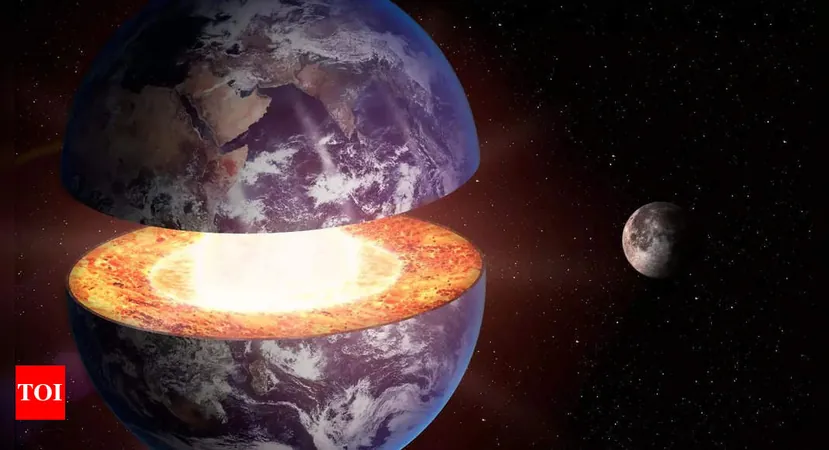
Is the Earth's Inner Core Undergoing a Shape Shift? Discover the Startling Truth!
2024-12-16
Author: Olivia
Introduction
Recent findings from the field of geophysics have unveiled intriguing evidence that the Earth's inner core may not only be rotating differently but is also undergoing significant changes in shape. This eye-opening information stems from detailed analyses of seismic waves generated by earthquakes. Researchers have observed subtle variations in the waveforms, leading to speculation that the inner core's surface is experiencing deformation—potentially influenced by the gravitational forces exerted by the mantle or the flow of materials from the outer core.
Startling Revelations
In a twist that has rocked scientific circles, it has been suggested that the rotation of the inner core has dramatically slowed over the past 15 years, to the extent that it appeared to pause or even reverse its direction in relation to the Earth’s surface. In a presentation to the American Geophysical Union, geophysicist John Vidale from the University of Southern California revealed that not only is the inner core rotating differently, but it is likely that its very surface is also morphing.
The Challenges of Studying the Core
The Earth’s core remains beyond human reach, complicating direct study. To unravel the mysteries hidden deep within, scientists have turned to seismic waves from earthquakes, particularly those originating from the South Sandwich Islands, a remote area close to Antarctica. As these seismic waves journey through the Earth, many of them traverse the inner core, ultimately being recorded by monitoring stations in Alaska. The waveforms captured reveal striking details about the materials they traverse.
Uncovering Changes in the Core
To identify subtle changes in the core’s structure, researchers typically compare earthquake events of similar magnitude from the same location but occurring at different times. Ideally, if conditions remain unchanged, these earthquakes would produce identical waveforms. However, in recent studies, scientists noticed significant discrepancies; the waveforms from two such quakes displayed stark differences, suggesting alterations within the inner core occurred between the events.
Confirming the Slowdown
In 2023, geophysicists reported a dramatic slowdown in the rotation of the inner core, indicating potential stasis or reversal relative to the Earth’s surface. Vidale confirmed this reversal while analyzing over 200 pairs of earthquakes recorded from 1991 to 2024. Pairing waveforms captured before and after the time of the rotation reversal, especially from monitoring arrays in Fairbanks, Alaska, and Yellowknife, Canada, the team discovered approximately ten waveforms that exhibited subtle differences. Notably, these changes were prominent in the Yellowknife recordings but absent in those from Fairbanks.
Possible Explanations and Implications
This peculiar phenomenon raises the question: what is causing these discrepancies? Experts propose two main hypotheses: either the core is undergoing overall deformation, or specific sections of the inner core are swelling or contracting. It is also possible that both processes could be occurring simultaneously. The underlying reasons for such changes could be attributed to gravitational influences from the mantle—the Earth's largest internal layer—or by materials and dynamics within the outer core.
Conclusion
The implications of these findings are profound. They may offer new insights into the dynamic processes occurring within our planet, potentially affecting everything from geological activity to the Earth's magnetic field. As researchers continue to explore the mysteries of the Earth's inner core, the question remains: what other secrets are lurking beneath the surface of our planet? Stay tuned for updates as this fascinating story develops!









 Brasil (PT)
Brasil (PT)
 Canada (EN)
Canada (EN)
 Chile (ES)
Chile (ES)
 España (ES)
España (ES)
 France (FR)
France (FR)
 Hong Kong (EN)
Hong Kong (EN)
 Italia (IT)
Italia (IT)
 日本 (JA)
日本 (JA)
 Magyarország (HU)
Magyarország (HU)
 Norge (NO)
Norge (NO)
 Polska (PL)
Polska (PL)
 Schweiz (DE)
Schweiz (DE)
 Singapore (EN)
Singapore (EN)
 Sverige (SV)
Sverige (SV)
 Suomi (FI)
Suomi (FI)
 Türkiye (TR)
Türkiye (TR)